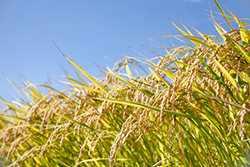Introduction
掲載
- Tweet
-
-

- Osakelistユーザーの評価
Hello, everyone, I’m Tomomi. I decided to write for this site in the hope of telling as many people as possible about the wonderfulness of sake, encouraging them—who do or do not love sake—to make sake a part of their life, and contributing to keeping our important culture going on. Hope you enjoy this site.
Let me start with telling you how sake is made. Do you know that the way sake is made is complex and very unique among other alcoholic beverages in the world?
First, let me explain the alcohol-making process. To put it very simply, alcohol is made by yeast that consumes sugar and produces alcohol.
In the case of grapes and apples in which a lot of sugar is contained, even if you just leave them, yeasts that exist in the air do the whole work and make alcohol on their own. (This type of fermentation is called “single fermentation” and is seen in the process of making wine, cinder, etc.)
 However, when making alcohol from barley or rice in which sugar exists only in the form of starch, it is required first to break down the starch into sugar and then let yeast turn the sugar into alcohol. (I guess everyone learned in the elementary school that the sweetness you feel when chewing rice is due to your saliva that turns rice into glucose. That is actually the basis of sake brewing, but I will talk about it later.)
However, when making alcohol from barley or rice in which sugar exists only in the form of starch, it is required first to break down the starch into sugar and then let yeast turn the sugar into alcohol. (I guess everyone learned in the elementary school that the sweetness you feel when chewing rice is due to your saliva that turns rice into glucose. That is actually the basis of sake brewing, but I will talk about it later.)
 Compared to beer brewing in which the fermentation process comes only after the completion of saccharification (conversion of starch into sugar), sake brewing requires those two processes done in parallel (multiple parallel fermentation). This is because too high a sugar level inhibits the yeast from working normally and too much alcohol prevents the activity of mold. Making sake requires close attention and skills to enable the best balance. Although sake brewing involves complex processes, it is the very reason why the best alcohol content can be achieved without distilling. The unique brewing method was born in the culture in which rice was the closest food to people, developed by their wisdom and delicate sense of balance, and has been passed down to our generation.
Compared to beer brewing in which the fermentation process comes only after the completion of saccharification (conversion of starch into sugar), sake brewing requires those two processes done in parallel (multiple parallel fermentation). This is because too high a sugar level inhibits the yeast from working normally and too much alcohol prevents the activity of mold. Making sake requires close attention and skills to enable the best balance. Although sake brewing involves complex processes, it is the very reason why the best alcohol content can be achieved without distilling. The unique brewing method was born in the culture in which rice was the closest food to people, developed by their wisdom and delicate sense of balance, and has been passed down to our generation.
